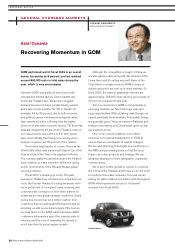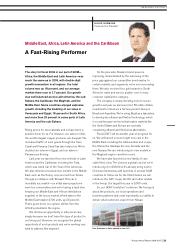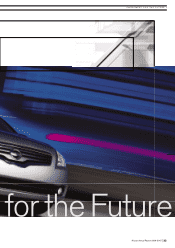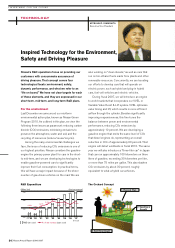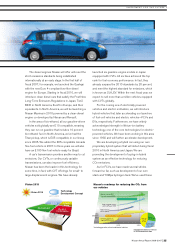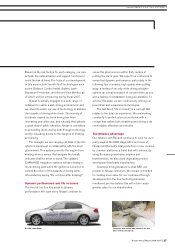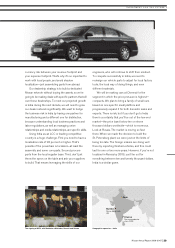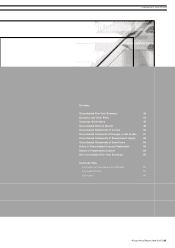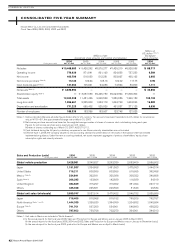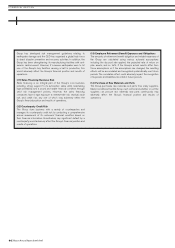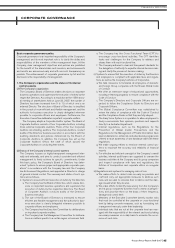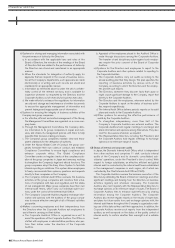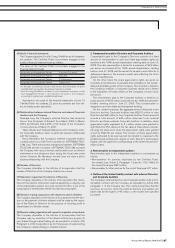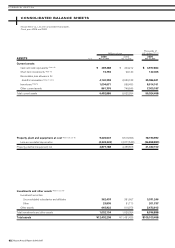Nissan 2007 Annual Report Download - page 41
Download and view the complete annual report
Please find page 41 of the 2007 Nissan annual report below. You can navigate through the pages in the report by either clicking on the pages listed below, or by using the keyword search tool below to find specific information within the annual report.
Nissan Annual Report 2006-2007 39
currency risk between your revenue footprint and
your expense footprint. That’s why it’s so important to
work with local people, and avoid shadow
localization—just assembling parts from abroad.
Our dealership strategy is to build a dedicated
Nissan network without buying the assets, so we’re
going to be making deals with specific partners that will
own those dealerships. To meet our projected growth
in India during the next decade, we will need to grow
our dealer network significantly. We want to hedge
the business risk in India by having one partner for
manufacturing and a different one for distribution,
because understanding local business practices and
labor regulations, as well as managing union
relationships and media relationships, are specific skills.
Using India as an LCC or leading competitive
country is a huge challenge. First you need to have a
localization rate of 90 percent or higher. That’s
possible if the powertrain is localized—at least the
assembly and some core parts. Second, procure
parts from the local supplier base. Third, don’t just
throw the specs on the table and ask your suppliers
to build. That means leveraging the skills of our
engineers, who will continue to shift their mindset.
To compete successfully in India, we need to
redesign our vehicle parts to adjust for local factory
tools, the local way of doing things, and even
different materials.
We will be making cars at Chennai for the
segment in which the price pressure is highest—
compacts. We plan to bring a family of small cars
based on one specific small platform and
progressively expand it for both domestic sales and
exports. There is risk, but if you don’t go to India
there’s a certainty that you’ll be out of the low-end
market—the price band below ten or eleven
thousand dollars worldwide—which is enormous.
Look at Russia. The market is moving so fast
there. When we made the decision to build the
St. Petersburg plant, we were just on the limits of
being too late. The foreign makers are doing well
there by importing finished vehicles, and this could
last for one or two more years. However, if you’re not
localized in Russia by 2009, you’ll be out for
everything between ten and twenty thousand dollars.
India is a similar game.
INVESTMENT FOR THE FUTURE »
The signing of MOU with Mahindra & Mahindra, Renault and Nissan Geographic expansion – India
Mumbai
Chennai
Nissan Motor India
HQ
Delhi
The new production
site in 2009



